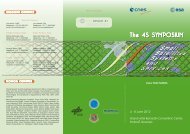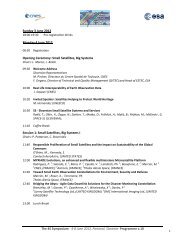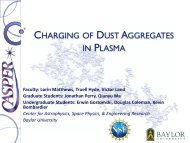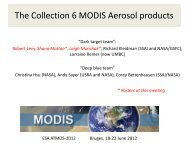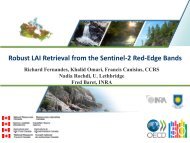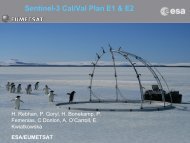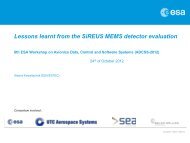Long term total ozone trend analysis
Long term total ozone trend analysis
Long term total ozone trend analysis
Create successful ePaper yourself
Turn your PDF publications into a flip-book with our unique Google optimized e-Paper software.
The main contributions to the <strong>ozone</strong> variability<br />
0<br />
Institut für Umweltphysik<br />
Fachbereich 1<br />
Physik<br />
Ozone depleting substances (ODS).<br />
o The various halogen compounds have different potentials to deplete stratospheric <strong>ozone</strong>.<br />
o EESC Equivalent Effective Stratospheric Chlorine<br />
http://acdb‐ext.gsfc.nasa.gov/Data_services/automailer/index.html<br />
� Solar cycle.<br />
o Decadal scale variation of <strong>total</strong> <strong>ozone</strong> correlates with the solar cycle.<br />
[Jackman et al., 1996; Miller et al.,1996]<br />
o The solar activity-<strong>ozone</strong> relationship considered in all international <strong>ozone</strong> <strong>trend</strong><br />
assessments (WMO,1999, 2003).<br />
o solar radio flux at 10.7 cm wavelength.<br />
ftp://ftp.ngdc.noaa.gov/STP/SOLAR_DATA/SOLAR_RADIO/FLUX/Penticton_Observed/monthly/<br />
� Major volcanic eruptions (aerosols).<br />
o Volcanic eruptions El Chichon in 1982 and Mt. Pinatubo in 1991, very low <strong>ozone</strong> in NH<br />
[Randel et al., 1995; Solomon et al., 1996].<br />
o Atmospheric dynamics and radiative forcing Effect [Solomon et al. 1996]<br />
o stratospheric aerosol optical depth at 550 nm.<br />
http://data.giss.nasa.gov/modelforce/strataer/







